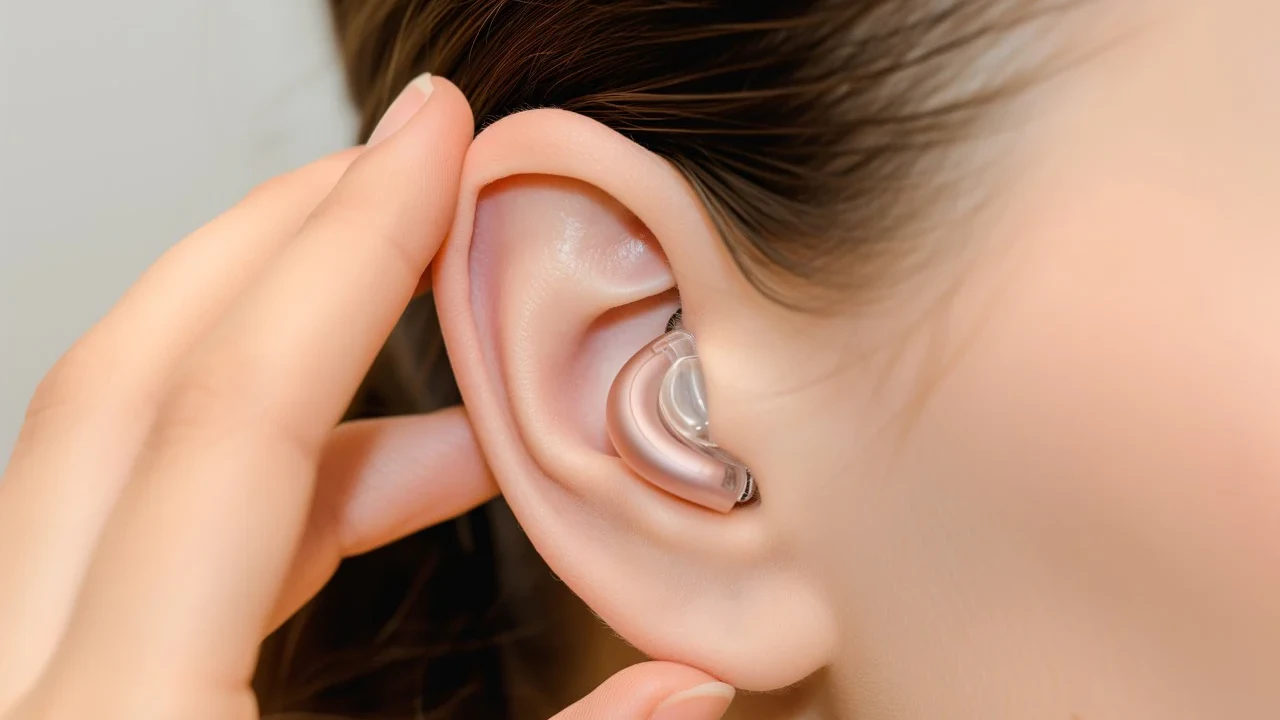Connectivity Options For Modern Hearing Aids
Discover the various connectivity options available in modern hearing aids, including Bluetooth, telecoils, and direct streaming to devices.

Discover the various connectivity options available in modern hearing aids, including Bluetooth, telecoils, and direct streaming to devices.
Connectivity Options For Modern Hearing Aids
Hey there! If you're diving into the world of modern hearing aids, you're in for a treat. Gone are the days when hearing aids were just about amplifying sound. Today's devices are packed with incredible connectivity features that can truly transform your listening experience and integrate seamlessly into your digital life. We're talking about everything from streaming your favorite music directly to your ears to making crystal-clear phone calls without even touching your phone. It's pretty amazing!
Let's break down the most common and exciting connectivity options you'll find in modern hearing aids. Understanding these can help you choose the perfect device that fits not just your hearing needs, but also your lifestyle.
Bluetooth Connectivity in Hearing Aids Your Wireless World
Bluetooth is probably the most well-known connectivity feature, and for good reason. It's a game-changer! Bluetooth allows your hearing aids to connect wirelessly to a whole host of other devices. Think about it: your smartphone, tablet, computer, and even some smart TVs can all become direct sources of sound for your hearing aids. This means you can stream audio directly into your ears, turning your hearing aids into high-tech wireless headphones.
Direct Streaming to Smartphones and Devices
Many modern hearing aids offer direct streaming capabilities, especially with smartphones. This is usually achieved through Bluetooth Low Energy (BLE) for Apple devices (Made for iPhone, or MFi) and increasingly for Android devices (Audio Streaming for Hearing Aids, or ASHA). What does this mean for you? Well, you can:
- Take Phone Calls: Imagine answering a call and hearing the person's voice directly in both ears, often with your hearing aid microphones picking up your voice. It's incredibly clear and hands-free.
- Listen to Music and Podcasts: Your favorite tunes or podcasts can be streamed directly, offering a rich, personalized listening experience. No more struggling to hear through external speakers.
- Watch Videos: Stream audio from YouTube, Netflix, or other video platforms directly to your hearing aids, making dialogue much clearer.
- Use Navigation Apps: Get turn-by-turn directions spoken directly into your ears, which is super helpful when driving or walking in unfamiliar places.
Bluetooth Accessories and Streamers
While many hearing aids offer direct streaming, some might require an intermediary device called a streamer or a remote microphone. These accessories typically connect to your hearing aids via a proprietary wireless signal and then connect to your phone or other audio source via Bluetooth. They can be particularly useful for:
- Older Hearing Aid Models: If your hearing aids aren't MFi or ASHA compatible, a streamer can bridge the gap.
- Non-Bluetooth Devices: Some streamers can connect to non-Bluetooth devices via an audio jack, then transmit the sound to your hearing aids.
- Enhanced Microphone Functionality: Remote microphones (often part of a streamer) can be placed closer to a speaker in a noisy environment, sending their voice directly to your hearing aids, significantly improving speech understanding.
Telecoils T-Coil Technology for Public Spaces
Telecoils, or T-coils, are a classic but still incredibly relevant connectivity feature. They're small copper coils inside your hearing aids that pick up electromagnetic signals from hearing loops (also known as audio induction loops). These loops are often installed in public venues like theaters, churches, airports, and lecture halls.
How Telecoils Enhance Listening
When you switch your hearing aids to the T-coil program (often indicated by a 'T' setting), the telecoil bypasses the hearing aid's microphone and directly receives the audio signal from the hearing loop. This means:
- Reduced Background Noise: You hear the speaker's voice or the performance audio directly, without the interference of ambient noise in the room. It's like having a direct audio feed!
- Improved Clarity in Large Venues: This is especially beneficial in places where acoustics can be challenging or where you're far from the speaker.
- Compatibility with Landline Phones: Many landline phones are T-coil compatible, allowing for clearer phone conversations.
While Bluetooth is fantastic for personal devices, telecoils remain invaluable for improving accessibility in public spaces. Always check if a venue has a hearing loop system, and make sure your hearing aids have a T-coil if this feature is important to you.
Direct Streaming to TVs and Other Audio Sources
Beyond smartphones, many modern hearing aids offer dedicated solutions for streaming audio from your television or other home entertainment systems. This usually involves a TV streamer accessory.
TV Streamers for Enhanced Viewing
A TV streamer is a small device that connects to your television (or sound system) and wirelessly transmits the audio directly to your hearing aids. This provides several benefits:
- Personalized Volume: You can set the TV volume to your preferred level without affecting others in the room. No more arguments over the remote!
- Crystal-Clear Dialogue: Dialogue often gets lost in background music or sound effects. Direct streaming ensures you hear every word clearly.
- Immersive Experience: Enjoy movies, sports, and music with rich, direct sound quality.
These streamers typically use a proprietary 2.4 GHz wireless technology, which offers a stable and high-quality audio connection specifically designed for hearing aids.
Remote Microphones for Challenging Listening Environments
Remote microphones are another fantastic connectivity accessory designed to improve hearing in specific, challenging situations, particularly in noisy environments or when listening to a speaker from a distance.
How Remote Microphones Work
A remote microphone is a small, portable device that the person you want to hear wears or places near themselves. It captures their voice and wirelessly transmits it directly to your hearing aids. This is incredibly useful for:
- Restaurants and Cafes: Place the mic on the table or clip it to your conversation partner to cut through the chatter.
- Lectures and Meetings: Give the mic to the speaker to hear them clearly, even from the back of the room.
- Car Rides: Hand the mic to passengers in the back seat to hear their conversation more easily.
Many hearing aid brands offer their own versions of remote microphones, often with advanced features like directional listening or multiple microphone modes.
Hearing Aid Apps and Remote Control Functionality
While not a direct audio streaming feature, hearing aid apps are a crucial part of modern hearing aid connectivity. Most major hearing aid manufacturers offer dedicated smartphone apps that allow you to control and personalize your hearing aids.
Control and Personalization at Your Fingertips
With a hearing aid app, you can:
- Adjust Volume: Easily change the volume of your hearing aids.
- Change Programs: Switch between different listening programs (e.g., 'restaurant,' 'music,' 'quiet') designed for various environments.
- Fine-Tune Settings: Adjust bass, treble, and other sound parameters to your preference.
- Geo-Tag Locations: Some apps can remember your preferred settings for specific locations (e.g., your home, office, or favorite cafe) and automatically switch to them when you arrive.
- Find My Hearing Aids: Misplaced a hearing aid? Many apps have a 'find my hearing aid' feature that uses location data to help you track them down.
- Remote Support: Some brands offer remote care, allowing your audiologist to make adjustments to your hearing aids from their office, saving you a trip.
These apps empower you to take more control over your hearing experience and make on-the-fly adjustments as your environment changes.
Comparing Top Hearing Aid Brands and Their Connectivity Features
Let's look at some popular hearing aid brands and their standout connectivity offerings. Keep in mind that specific features can vary by model and technology level within each brand.
Phonak Hearing Aids Connectivity Marvels
Phonak is often considered a leader in universal Bluetooth connectivity. Their Lumity and Paradise platforms are particularly renowned.
- Universal Bluetooth: Phonak hearing aids are famous for connecting directly to virtually any Bluetooth-enabled device, including both iOS and Android phones, as well as computers and tablets. This means true hands-free calling and streaming from almost any source.
- Tap Control: With some models, you can answer calls, pause/resume streaming, and activate voice assistants with a simple tap on your ear.
- Roger On Remote Microphone: Phonak's Roger On is an advanced remote microphone that significantly improves speech understanding in noise and over distance. It can be used as a table mic, a lapel mic, or pointed at a speaker.
- TV Connector: A dedicated accessory for high-quality TV streaming.
- myPhonak App: Offers comprehensive control, personalization, and remote support.
Example Product: Phonak Audeo Lumity L90-R. This top-tier rechargeable RIC (Receiver-In-Canal) hearing aid offers universal Bluetooth, tap control, excellent sound quality, and full app control. It's ideal for active individuals who want seamless connectivity across all their devices. Estimated Price: $3,000 - $7,000 per pair, depending on provider and technology level.
Oticon Hearing Aids Intelligent Connectivity
Oticon focuses on 'BrainHearing' technology, aiming to provide the brain with the clearest possible sound. Their connectivity features are designed to support this.
- Made for iPhone (MFi) and ASHA (Android): Oticon hearing aids, like those on the More and Real platforms, offer direct streaming to both iOS and compatible Android devices.
- ConnectClip: This accessory acts as a remote microphone, a hands-free headset for non-MFi/ASHA phones, and a streamer for other Bluetooth devices.
- TV Adapter: For direct streaming from your television.
- Oticon ON App: Provides remote control, sound adjustments, and access to features like 'Find My Hearing Aid' and 'HearingFitness' for tracking usage.
Example Product: Oticon Real 1 miniRITE R. This rechargeable hearing aid offers MFi and ASHA direct streaming, advanced sound processing, and access to the Oticon ON app. It's great for users who prioritize natural sound and seamless smartphone integration. Estimated Price: $2,800 - $6,500 per pair.
Resound Hearing Aids Smart and Personalized Connectivity
Resound is known for its smart hearing solutions and strong focus on personalized experiences.
- Made for iPhone (MFi) and ASHA (Android): Resound ONE and Omnia models offer direct streaming to both iOS and compatible Android devices.
- Multi Mic: A versatile remote microphone that can be used as a table mic, lapel mic, or connected to loop systems and FM systems.
- TV Streamer 2: For high-quality audio from your TV.
- Resound Smart 3D App: Offers extensive control, personalization options, and even a 'Resound Assist Live' feature for remote adjustments with your audiologist.
Example Product: Resound Omnia 9 RIC. This premium rechargeable hearing aid provides excellent sound quality, MFi and ASHA streaming, and advanced features for speech clarity in noise. The Smart 3D app offers a high degree of user control. Estimated Price: $2,900 - $6,800 per pair.
Signia Hearing Aids Innovative and Discreet Connectivity
Signia often pushes boundaries with innovative designs and advanced features, including their Styletto and AX platforms.
- Made for iPhone (MFi) and ASHA (Android): Signia hearing aids offer direct streaming to both iOS and compatible Android devices.
- StreamLine Mic: This accessory enables hands-free calling with any Bluetooth phone and streams audio from other Bluetooth devices.
- StreamLine TV: For high-quality TV audio streaming.
- Signia App: A comprehensive app for remote control, sound adjustments, and access to Signia Assistant, an AI-powered assistant for personalized sound.
Example Product: Signia Pure Charge&Go AX 7. This rechargeable RIC hearing aid features their Augmented Xperience platform for enhanced speech clarity, MFi and ASHA streaming, and the intuitive Signia App. It's a strong contender for those seeking advanced sound processing and connectivity. Estimated Price: $2,700 - $6,300 per pair.
Widex Hearing Aids Natural Sound and Seamless Connectivity
Widex is known for its focus on natural sound quality and innovative approaches to hearing aid technology.
- Made for iPhone (MFi) and ASHA (Android): Widex Moment and Magnify hearing aids offer direct streaming to both iOS and compatible Android devices.
- COM-DEX: A stylish accessory that streams high-quality sound to your Widex hearing aids from any Bluetooth device.
- TV Play: For direct, high-quality audio streaming from your television.
- TONELINK App / Widex MOMENT App: Provides remote control, sound personalization, and access to features like SoundSense Learn for AI-powered sound optimization.
Example Product: Widex Moment Sheer 440. This premium rechargeable RIC hearing aid emphasizes natural sound and offers MFi and ASHA streaming. The Widex MOMENT app allows for extensive personalization. Estimated Price: $2,900 - $6,700 per pair.
Choosing the Right Connectivity for Your Lifestyle
When you're looking at new hearing aids, thinking about how you want to connect them to your world is just as important as how well they amplify sound. Here are some things to consider:
Your Daily Routine and Connectivity Needs
- Smartphone User? If you're constantly on your phone for calls, music, or podcasts, direct Bluetooth streaming (MFi/ASHA) is a must-have.
- TV Enthusiast? A dedicated TV streamer will significantly enhance your viewing pleasure.
- Frequent Public Venue Goer? If you attend lectures, theater, or church regularly, a telecoil can be incredibly beneficial.
- Social Butterfly in Noisy Places? A remote microphone will be your best friend for understanding conversations in challenging environments.
- Tech-Savvy and Love Control? A comprehensive hearing aid app with personalization features will be right up your alley.
Compatibility with Your Existing Devices
Always check the compatibility of hearing aids with your specific smartphone model. While MFi is generally consistent across Apple devices, ASHA compatibility for Android can vary between phone manufacturers and even specific phone models. Your audiologist can help you verify this.
Ease of Use and User Experience
Some connectivity solutions are more intuitive than others. During your trial period, experiment with all the features. How easy is it to switch between streaming and regular listening? How quickly do your hearing aids connect to your phone? A seamless user experience makes a big difference in daily satisfaction.
The Future of Hearing Aid Connectivity
The world of hearing aid connectivity is constantly evolving. We're seeing trends like:
- Enhanced AI Integration: AI is already helping personalize sound, and it will likely play an even bigger role in managing connectivity, automatically switching programs, and optimizing streaming quality.
- More Universal Standards: While MFi and ASHA are great, a truly universal Bluetooth standard for all devices would simplify things even further.
- Health Tracking: Some hearing aids are starting to incorporate health tracking features, like step counting or heart rate monitoring, further integrating them into your overall wellness ecosystem.
- Augmented Reality Audio: Imagine hearing aids that can selectively amplify certain sounds while suppressing others, or even overlaying digital information onto your auditory world. The possibilities are exciting!
Modern hearing aids are far more than just sound amplifiers; they are sophisticated communication and entertainment hubs. By understanding the various connectivity options available, you can make an informed decision and choose devices that not only improve your hearing but also enrich your entire daily life. Don't hesitate to discuss these options thoroughly with your audiologist to find the perfect fit for you.
:max_bytes(150000):strip_icc()/277019-baked-pork-chops-with-cream-of-mushroom-soup-DDMFS-beauty-4x3-BG-7505-5762b731cf30447d9cbbbbbf387beafa.jpg)






